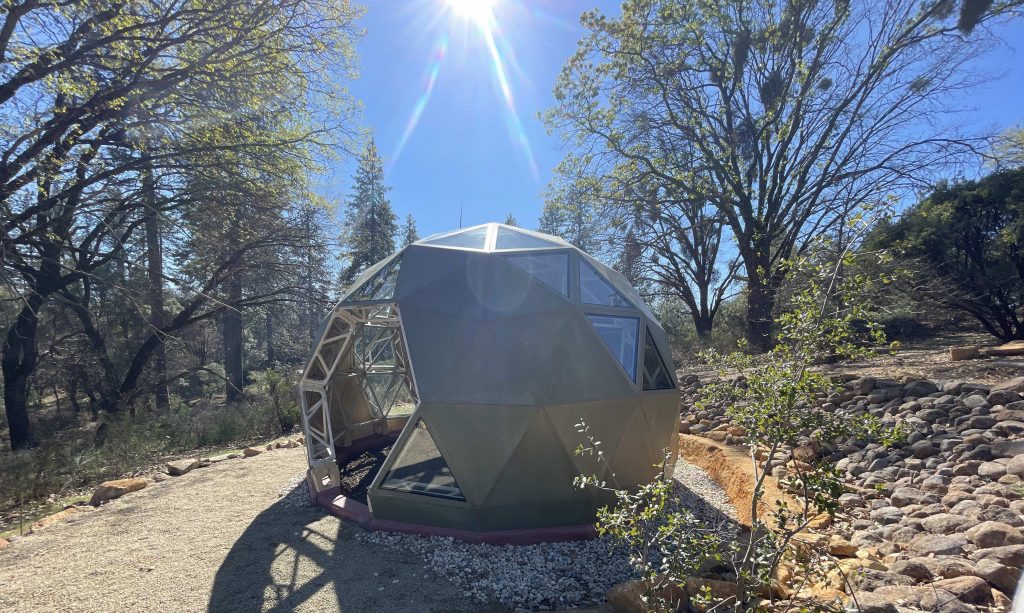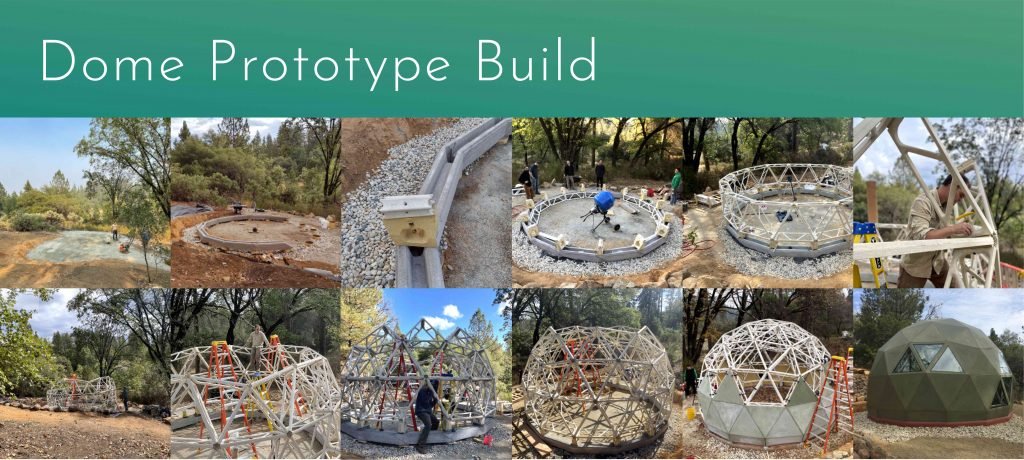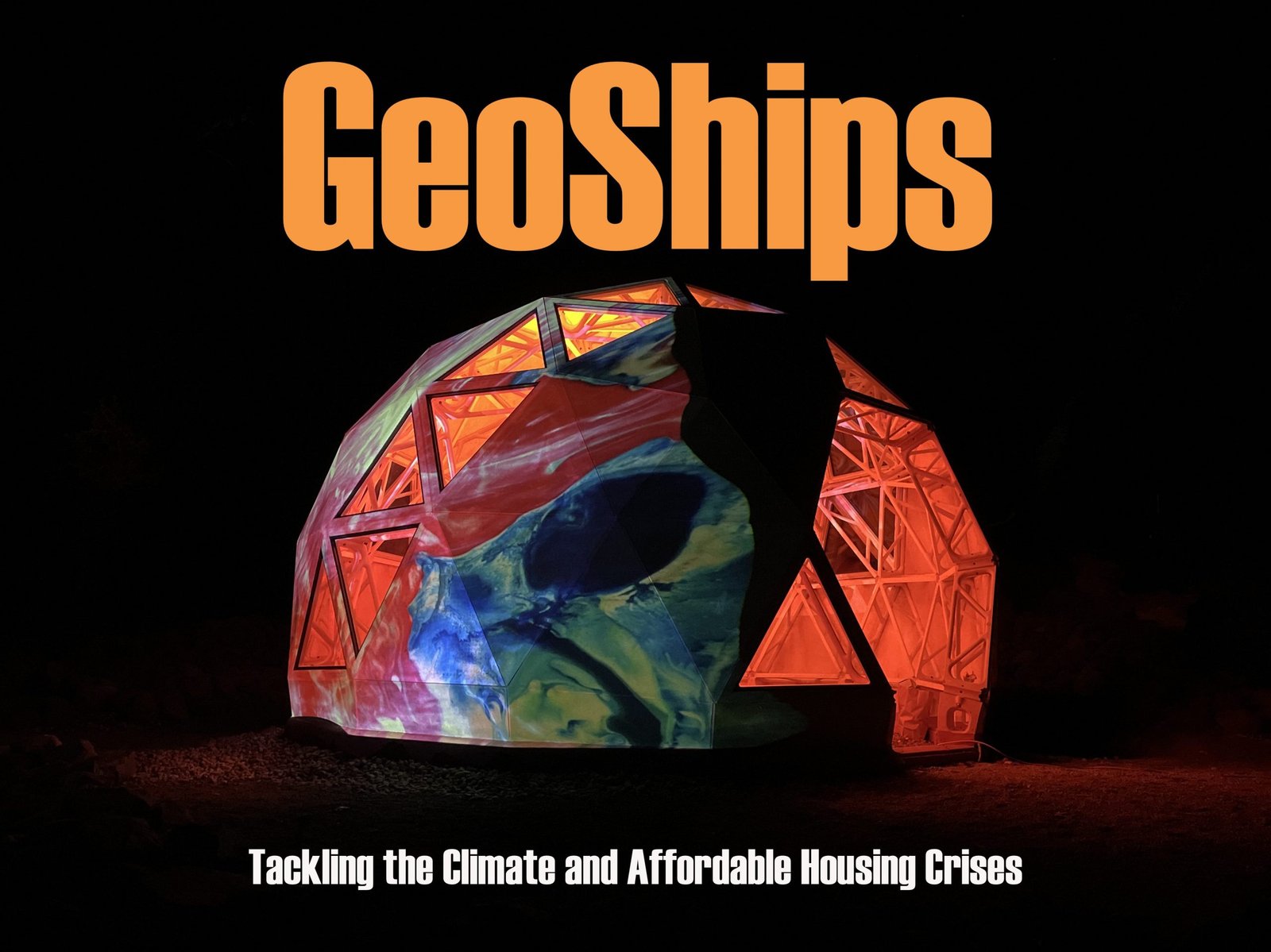By David Dodge, GreenEnergyFutures.ca
Picture small geodesic domes sprinkled in a decentralized cooperative village in rural British Columbia – if you are thinking of a Hobbit village, you’re on the right track.
Geoship is an upstart company out of California that set out to create a new kind of climate-resilient, affordable housing that addresses both the climate crisis and the housing crisis at the same time.
Jean-Marc LaFlamme is with Geoship Domes and Regen Villages based in the Kootenays of British Columbia.
An independent home building cooperative at its core, Geoship has raised $2 million on Start Engine from 2,000 investors and built their first prototype Geoship Dome in March.

“The cool thing about Geoship is that it’s climate-proof – so it’s fireproof and stormproof and all the proofs,” says LaFlamme.
The Geoship is a geodesic dome modeled after the ones Buckminster Fuller popularized in the 1950s. But this time they are building them out of ceramic that can be infused with a variety of locally-sourced waste products to produce a super-strong composite ceramic material.
The prototype was built using ceramic infused with hemp waste from a cannabis operation.
According to Geoship literature, the concept can be made “radically affordable through mass manufacturing,” has a 10x smaller carbon footprint than stick-built, is nontoxic, fireproof and disaster resilient. They also claim the structures will last 500 years.
The process is described as Chemically Bonded Ceramics or bioceramics.
LaFlamme says they are planning to produce two sizes of geo domes: a small version, 16 feet in diameter with an 11-foot ceiling for 200 square feet of space, and a second version which is 27 feet in diameter, with a 17-foot ceiling for 800 square feet of space.



The designs are modular, meaning you can interconnect a number of domes. “So you start off with a small one or you can end up with a big mansion if you’d like,” says LaFlamme.
Geoship is also offering a very different model of cooperative ownership.
“Geoship is launching a DAO, (Decentralized Autonomous Organization), to decentralize the development process and build regenerative villages at scale,” says their literature.
“You’re going to own your dome. You’re going to own the materials. And so, end to end any community can own their building processes in a much more decentralized fashion,” says LaFlamme. Let’s all own the process and open-source its evolution.”

What makes Geoship distinct is that they are bringing the materials science, product design, and manufacturing all under one roof, which Geoship co-founder and CEO Morgan Bierschenk says will produce innovative and scalable results.
The prototype includes a 10-inch cavity for insulation, which means you could get R36 if you fill it with cellulose insulation.
According to Bierschenk, the structures are designed to meet international residential building codes, a concern for anybody looking at alternative housing.
Geoship has already attracted 2,000 investors and the reveal of its prototype in March was a big step forward. In a recent live feed Bierschenk says pilot production is two years away with full production coming in four to five years.
We’ve featured very cool sea container cabins, tiny homes, strawbale homes and Earthships but this just might be an idea with legs. The buildings are very attractive and could play a very interesting role in producing a new kind of affordable housing, cooperative villages, and as alternatives to housing for the homeless too.
Who wouldn’t want to live in a Hobbit village?

